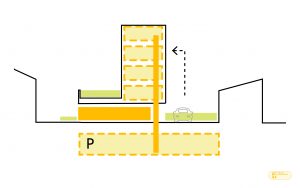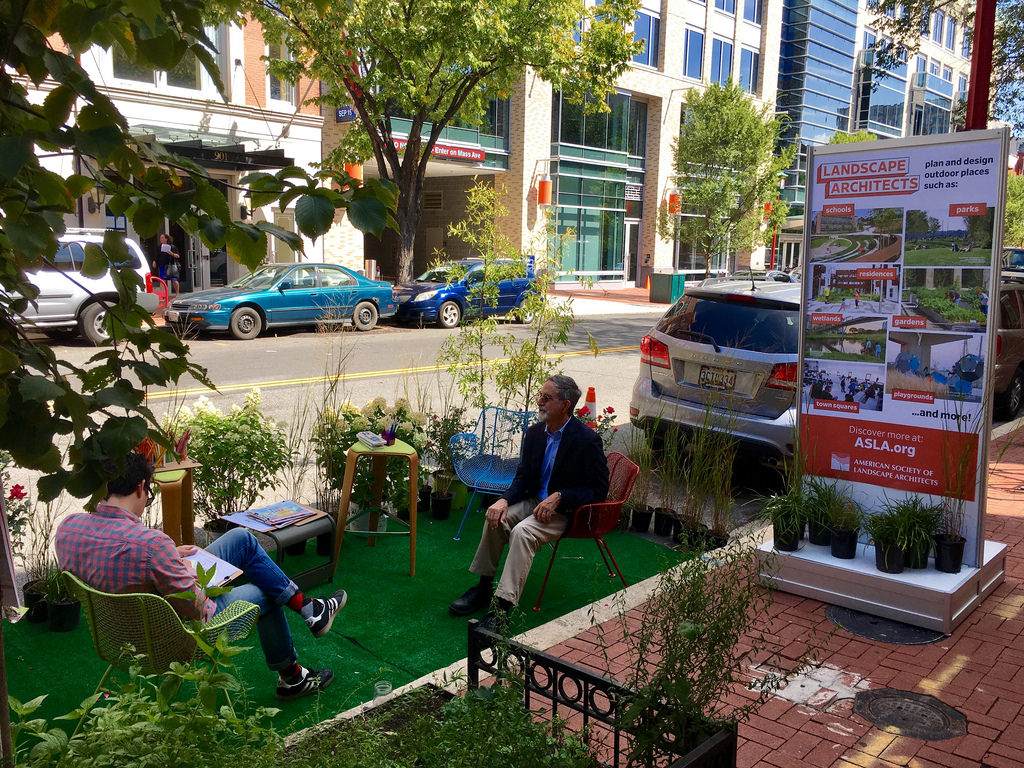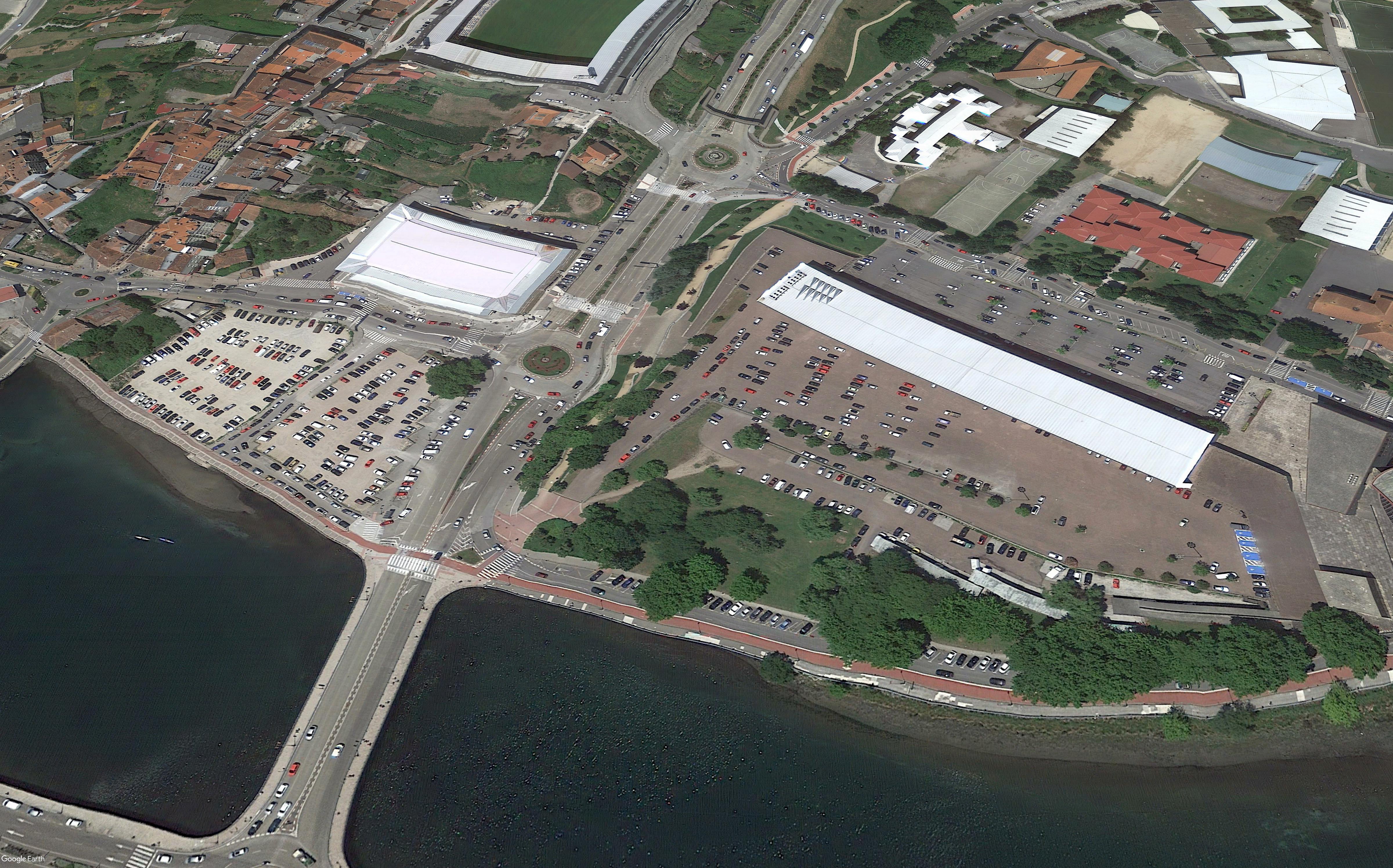AC04 PARKING MANAGEMENT
Shrinking the number of street parking spaces

Aim
To reduce the area occupied by standing cars and to recover that space for the street functions: stay, movement and social relations.
Why?
Managing parking in a city means managing the use of the private vehicle and congestion and, consequently, the management of public space. It is the most powerful tool a city has to improve its public space performance.
A significant part of the time that we spend in the car is dedicated to find a place to park, which means wasted time and fuel, but also increases traffic agitation and reduces road safety.
On the other hand, in most areas of the city, peak demand occurs only for a few hours a day (or even a week). It is more efficient to reduce peak demand than to increase supply.
Studies around the world show that consumers who walk or cycle to shops spend more than those who arrive by car, and that the elimination of street parking increases the sales of street shops.
The demand for parking in areas with free street parking corresponds to the demand at zero price, but parking is never free. We all pay for it, rather than those who use it. This free and open parking encourages excessive use of the car and stops other users from using public space.
How?
Parking management must be approached from different scales and scopes, and the solutions in each of them must be different.
► City:
• Hierarchising the streets network.
• Eliminate parking spaces located in the basic network (distributor roads) that affect the operation of other transportation networks. The rest of the spaces must be regulated.
• Implement park and ride facilities connected to the bicycle and public transport networks to compensate for the elimination of places on the basic network. Users who leave their car in the park and ride will receive in exchange a 24-hour public transport/bike pass, renewable for a longer period at a reduced fare. These car parks can be used at origin, in which case they will have no influence on the car park in the city of origin, but will have an influence on traffic in general if they are properly connected to other mobility networks.
• Use the parking fee to manage demand, charging more in the areas with the highest demand, and using that revenue to provide alternatives to the private vehicle.
• Use dynamic pricing, adapting the rate according to the area, time, vehicle size, duration of parking, etc. This must be combined with application-based charging so that the user can know the cost in each situation beforehand.
► Neighbourhood or Superblock:
• Eliminate surface parking spaces in the inner streets of superblocks (access streets) that interfere with other mobility networks. The rest of the spaces will be regulated by means of a “residential area” system.
• The elimination of parking spaces within the superblocks may be compensated for by constructing underground car parks.
► Building in new developments:
• Taking the legal parking provision requirements as a maximum and not a minimum.
• Include parking for all modes of transport in the spaces required by the legislation in the street, including bicycles and motorcycles.
• Build the car parks separate from the building, in order to even public transport and private vehicles in the first stage on foot.
• Limit to a minimum the entrances and exits of private car parks, forcing shared access between buildings to reduce interference with the pedestrian and cyclist network.
• The accesses to public car parks will always be on the distribution streets or at the supermanzana entrances, never on access roads. In the case of private car parks, the number of accesses from the street must be limited.
• Public car parks should be multistorey or underground, rather than on the street.
• There should be no parking at building entrances to avoid conflicts with pedestrians.
• Parkingspaces linked to the dwellings should be sold separately from the dwelling. As a result, buyers could decide whether or not to buy them.
► Legal measures:
• Modify the minimum standards for parking spaces in the General Plans, eliminating them if possible. This would force to separate the cost of the parking spaces from the cost of the housings, reducing the demand of those, especially in the street. If this is not possible, establish maximum and not minimum standards.
• Limit the time of use of loading and unloading parking spaces, avoiding them to become industrial car parks.
• Establish a maximum number of parking spaces per zone. If new parking spaces are built outside the carriageway, they must be eliminated in the same number from the carriageway.
• Use the benefits of regulated parking to improve sustainable transport networks or to subsidise their use by certain groups.
• Charge more taxes to companies that offer free parking to their employees.
• Collect taxes on private driveways in relation to the parking spaces they serve.
► Technological measures
• Implement a parking search and payment application.
• Manage the reservations of loading and unloading spaces so that delivery vehicles do not have to circulate looking for parking. This type of traffic, one of the most important in the city, and in constant growth, is dealt with in an independent solution in this catalogue.
Proposal for new developments in Lugo’s SUMP

PARKing Day. Fonte: airbus777 / Flickr

Parking lots in Pontevedra. Source: Google

City Scale Intervention

ISSUES AFFECTED
SUITABLE FOR COMBINING WITH OTHER SOLUTIONS
MEASURING ELEMENTS
Indicator
Main: C02 reduction by switching from private vehicle to bus trips
Secondary: % of trips from PV to bus/bicycle/walk
Unit
g CO2
% of trips from PV to bus/bicycle/walk
Minimum Goal
50 % of trips from PV to bus/ bicycle/walk
Desirable Goal
70 % of trips from PV to bus/ bicycle/walk
Measure method / Formula
Anual Mobility Survey
∆g CO2=A x [B – C] x D
A: % of trips from PV to bus/bicycle/walk
B: PV CO2 Emission Factor (g CO2/km)
C: Sustainable mode CO2 Emission Factor (g CO2/km)
D: Total km travelled
The formula may vary depending on available data.
PLANNING LEVEL
General Planning
Development Planning
Urbanization Detailed Design
Construction Detailed Design
PEOPLE INVOLVED
Local Officials
Planning and design team
Real estate developers
Neighbourhood communities
POSIBLE ACTIONS DEVELOPED BY THE ADMINISTRATION:
∙ Reduce parking space in official buildings
∙ Increase enforcement against illegal parking
∙ Promote PARK(ing) Day like events
WHAT SHOULD BE CONSIDERED FOR ITS IMPLEMENTATION?
∙ The management of the parking offer is one of the most unpopular measures in this catalogue
∙ Thorough Studies and persuasive arguments will be needed to convince users and traders
∙ At the same time as the provision of parking is reduced, it is necessary to increase the supply of sustainable modes of transport
















